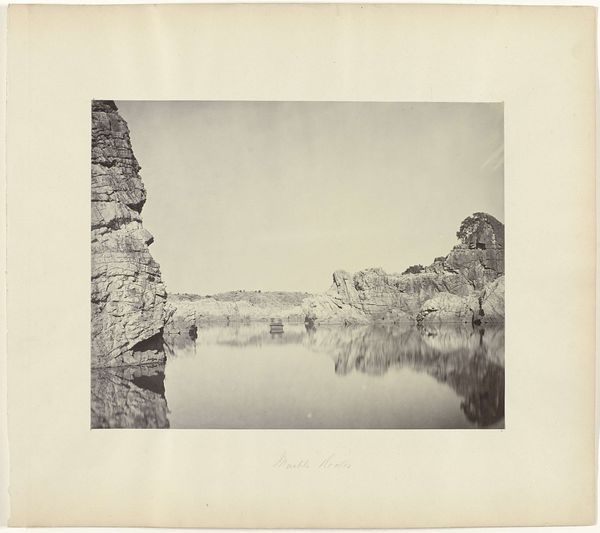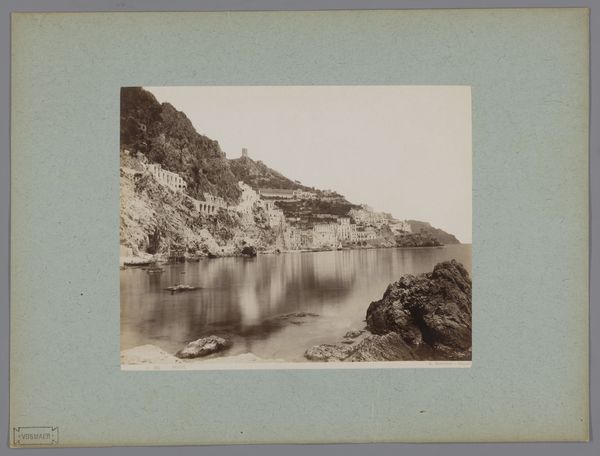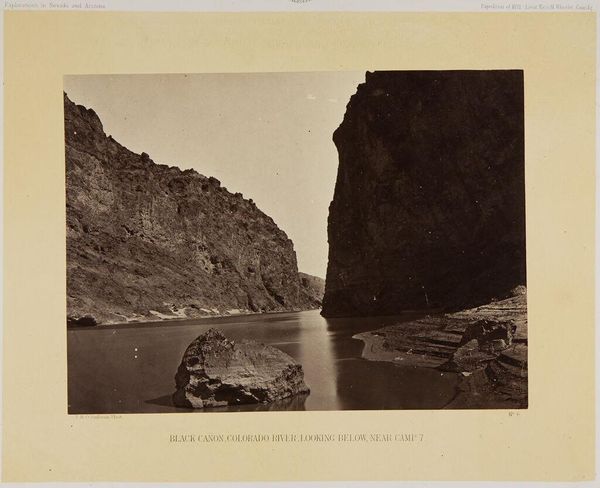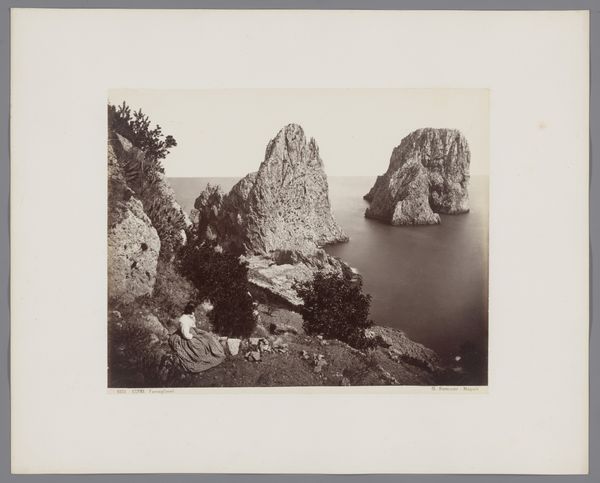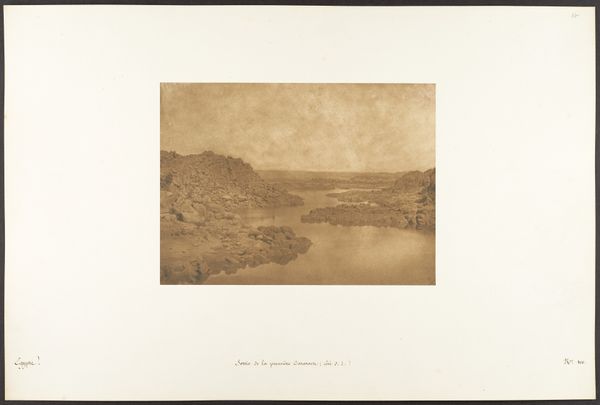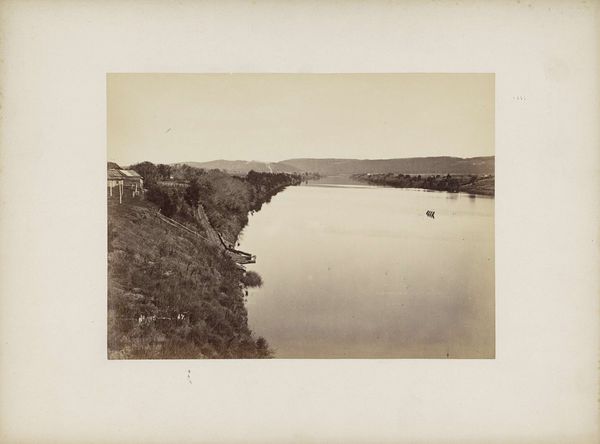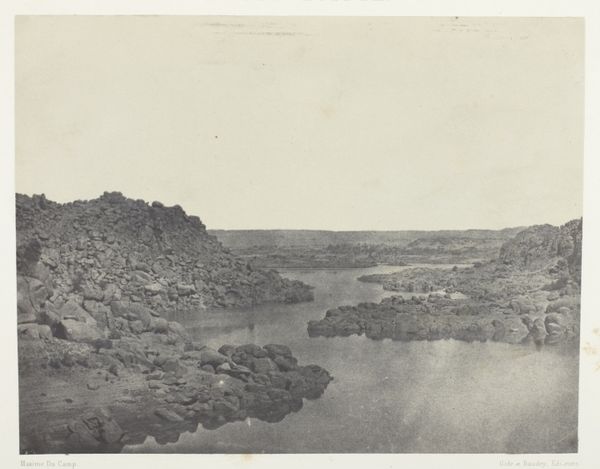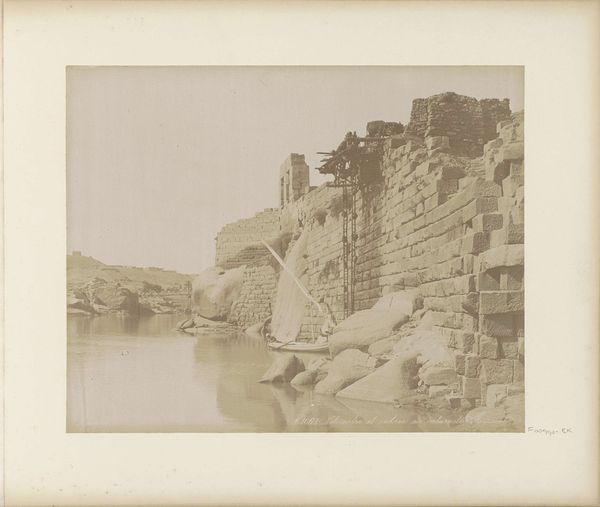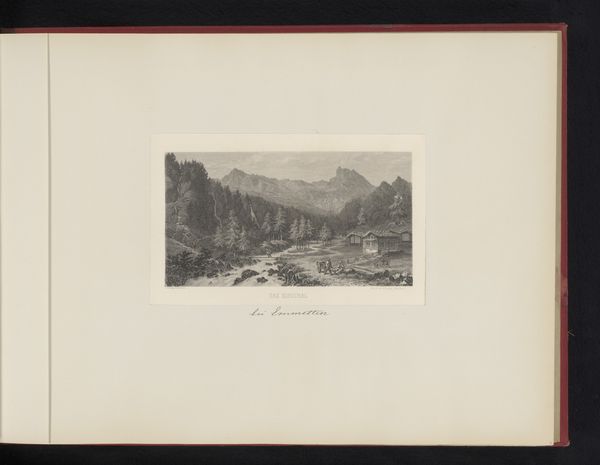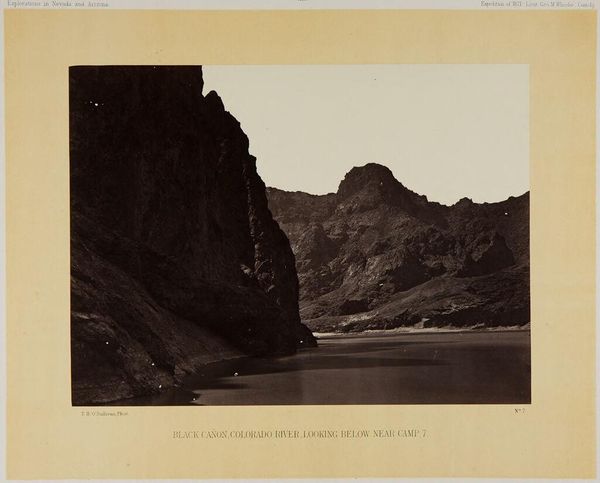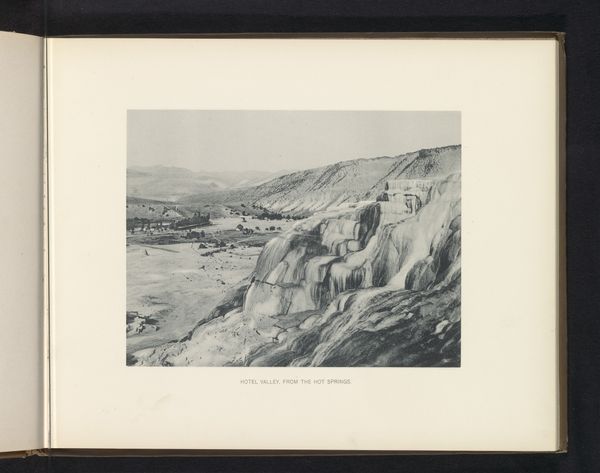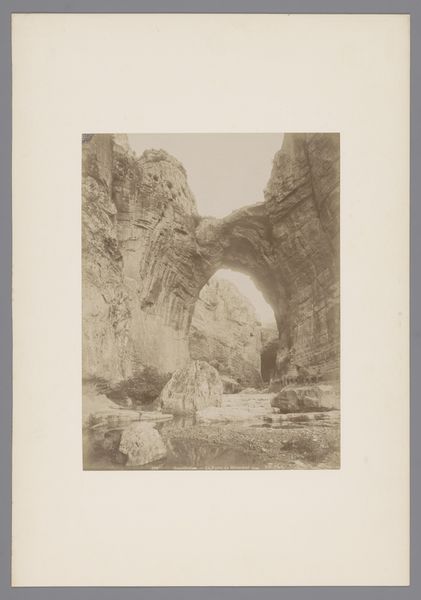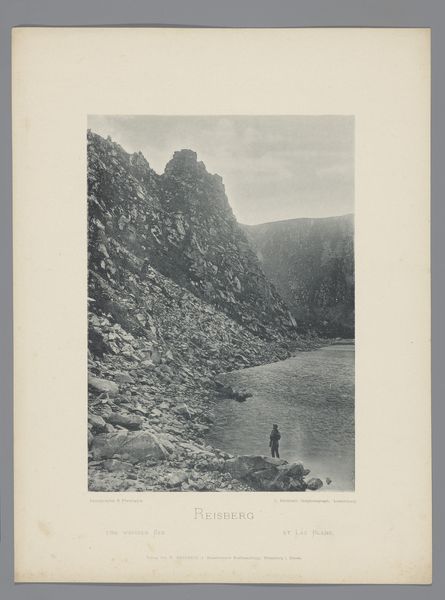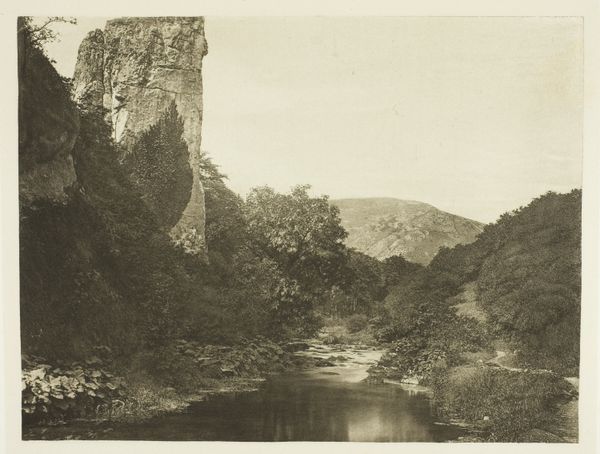
Gezicht op de Marble Rocks aan de Narmadarivier nabij Jabalpur, India 1863 - 1870
0:00
0:00
Dimensions: height 370 mm, width 415 mm
Copyright: Rijks Museum: Open Domain
Editor: Here we have Samuel Bourne's "Gezicht op de Marble Rocks aan de Narmadarivier nabij Jabalpur, India", created between 1863 and 1870. The daguerreotype captures this amazing Indian landscape... it feels so serene and still. The water's reflection creates such a symmetrical composition. How do you interpret this work? Curator: The allure, I believe, rests upon the photographic object's self-referential properties. Observe how Bourne crafts an image deeply rooted in the formal aspects of light and texture. The tonality, primarily monochrome, emphasizes the geological structure—the marble rocks themselves—creating a textural dialectic between rough stone and smooth water. It begs a question: does this aesthetic emphasis displace its representational value? Editor: I hadn't considered that tension. I was so drawn to the visual symmetry...the balance in the composition felt like the focal point. Is it primarily about how he used light to draw attention to the rocks? Curator: Precisely. Bourne uses light as a compositional tool. Light, by its nature, highlights shape and three-dimensionality. Also, reflect upon the horizontal orientation; note how it elongates the river's course and draws one's vision deeper into the pictorial space, thus manipulating spatial comprehension and visual tempo within the frame. Editor: So, the form itself communicates as much as, or perhaps more than, the subject? Curator: Precisely. Form transcends the factual depiction of the location itself. The work becomes less about 'where' and much more about 'how' we see, and how the visual language manipulates spatial perception. Editor: I see! Looking closely at the texture of the rock and how the reflection sits perfectly on the water…it gives this picture a different story entirely! Curator: Indeed. It compels a reconsideration of photographic image not merely as a document but as a complex construct.
Comments
No comments
Be the first to comment and join the conversation on the ultimate creative platform.
